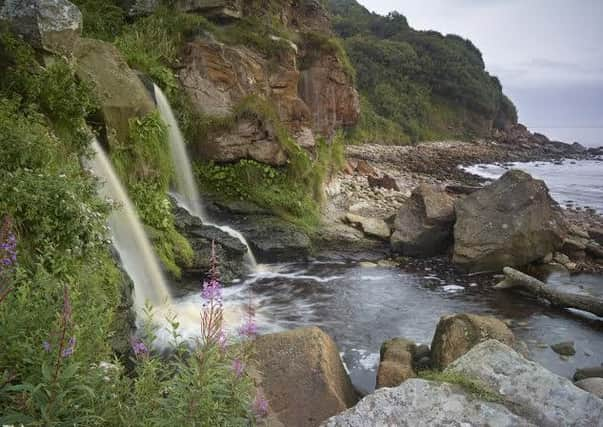Country & Coast: Covert history of secluded Yorkshire cove


Not surprisingly, this rare oasis of greenery right on the coast is a nature reserve managed by the Yorkshire Wildlife Trust. The woodland birdlife isn’t particularly notable - although many people are quite content to watch species like linnet, blackcap and spotted flycatcher - but the sea provides a good number of rarities in late summer and autumn. A year ago I was kept entertained by an Arctic skua harassing the herring gulls.
However, some decades ago, it has emerged, the sea might well have brought in some rather more unwelcome visitors from the north and, if that had happened, more than the local gulls would have been harassed. I know this thanks to the diligence of Dave Greenwood, who has been updating his blog for walkers of the Cleveland Way national trail which runs through Hayburn Wyke.
Advertisement
Hide AdAdvertisement
Hide AdDave recalls that a couple of centuries ago visitors to the cove might once have been required to be wary of smugglers bringing ashore their contraband. But in the early 1970s, he says, there was another danger. They might have come face to face with Soviet spies.
Evidence has emerged that during the Cold War, agents from the Soviet KGB were eyeing beautiful Hayburn Wyke with sinister intent. According to Dave, the Soviet Union was making contingency plans in the event of an invasion of the UK and surveying Hayburn Wyke as a potential landing site. They called the plan Operation Foot, and when it was exposed in 1971 there was a mass expulsion of Soviet diplomats from London for working covertly as intelligence agents.
The story reads like a John le Carré novel, except that it’s true.
Apparently, Oleg Lyalin, a diplomat working for the Soviet Trade Delegation in Highgate, wished to defect and one of the secrets he revealed was that he had made several visits to Hayburn Wyke. His job, he explained, was working for a KGB unit specialising in sabotage and covert attacks during periods of crisis or war. It was his task to select and report on sites that could be used for landing Soviet sabotage groups by sea and air.
Advertisement
Hide AdAdvertisement
Hide AdThe KGB spy’s survey of Hayburn Wyke, eventually exposed by a Cambridge history professor, was well advanced when he defected. He even backed up his story with a map of where the landings were possible. Chillingly, the KGB planned to form sabotage groups which would “demoralise and terrorise” the civilian population by attacking railways. It is not recorded, however, whether the spy knew that the nearby Scarborough-Whitby line had closed in 1965.
So the next time people visit Hayburn Wyke, Dave suggests, they should keep an eye out for discarded vodka bottles or watch for submarines offshore. There might be more than an Arctic skua around.